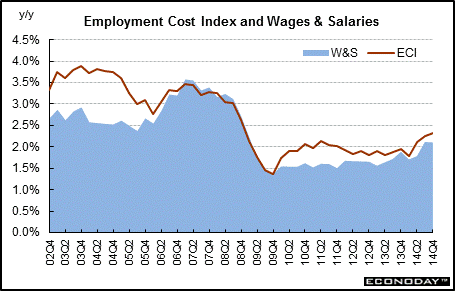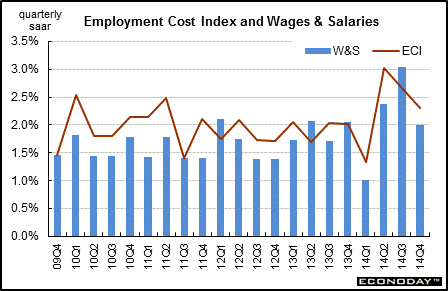
|
Long Term Perspective Federal Reserve officials closely monitor the employment cost index, which measures total compensation costs. Compensation includes wages & salaries as well as benefits. Compensation costs moderated sharply in 2002, then again in the first half of 2005 after remaining stable in the two previous years. Both wages & salaries and benefits rose notably in 2006 and remained elevated during 2007 but eased during 2008 and through 2009 due to a soft labor market but also due to employers passing more medical benefits costs on to workers. Employment costs began to nudge up in 2010 and early 2011, eased somewhat in 2012, and held a steady pace in 2013 on a year-ago basis. There were signs of moderate warming in the second half of 2014.
Short Term Perspective Recently, the employment cost index in the fourth quarter of 2014 increased to 2.3 percent on a year-ago basis, matching the pace the quarter before. Wages and salaries were up 2.1 percent compared to 2.1 percent for the third quarter. On a quarterly annualized basis, employment cost inflation posted at 2.3 percent, following a 2.7 percent rise in the third quarter with slower growth in wages & salaries being the factor. Wages & salaries inflation came in at 2.0 percent from 3.0 percent in the prior quarter.
|
|||||||
| Legal Notices | ©Copyright 1998-2024 Econoday, Inc. |
powered by
![[Econoday]](images/logo.gif)
![[Apple App Store]](/images/AppleAppStore.png) ![[Econoday on Kindle]](/images/kindle.jpg) 
|
||||||

